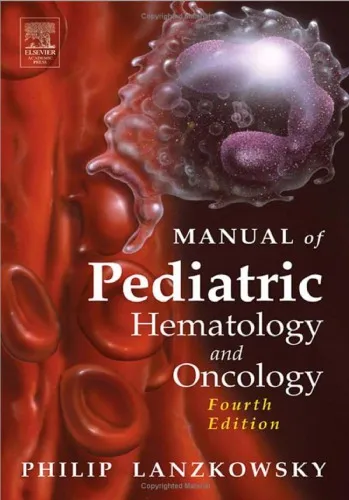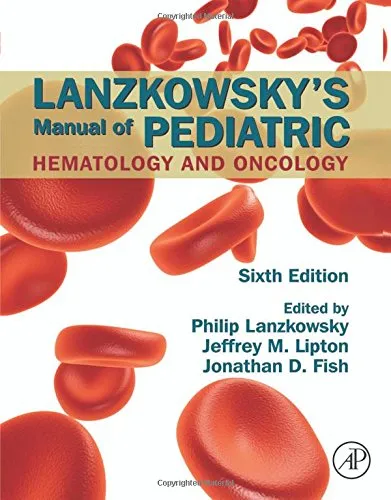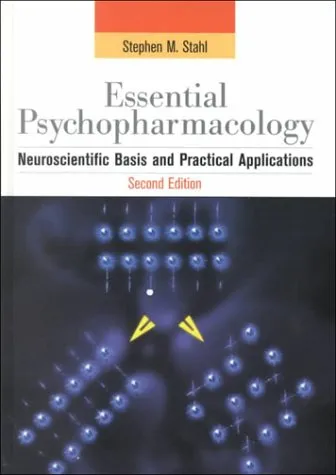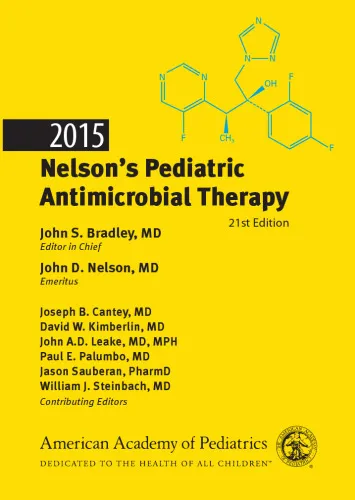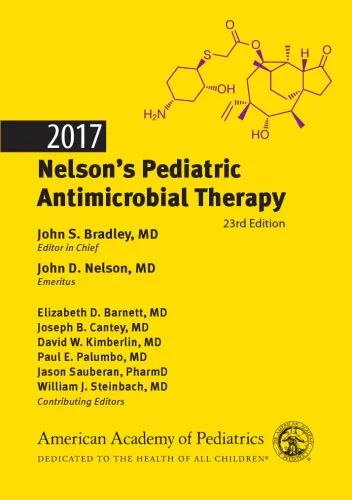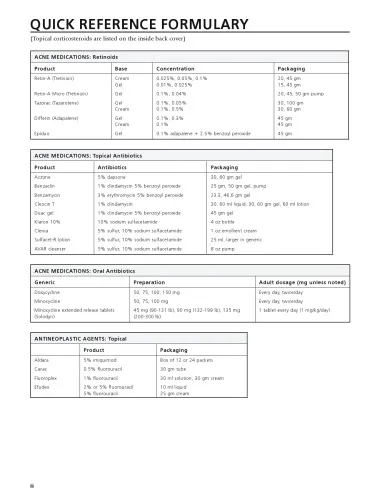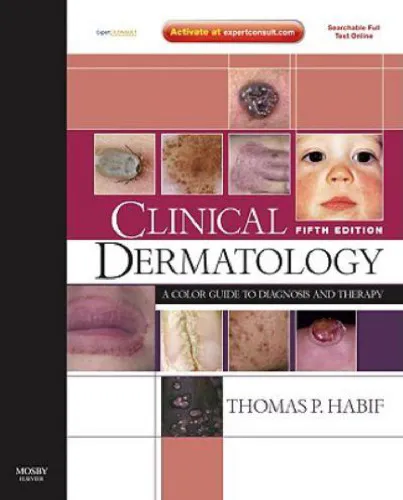Pediatric Blood & Cancer
4.9
بر اساس نظر کاربران

شما میتونید سوالاتتون در باره کتاب رو از هوش مصنوعیش بعد از ورود بپرسید
هر دانلود یا پرسش از هوش مصنوعی 2 امتیاز لازم دارد، برای بدست آوردن امتیاز رایگان، به صفحه ی راهنمای امتیازات سر بزنید و یک سری کار ارزشمند انجام بدینکتاب های مرتبط:
خلاصه تحلیلی کتاب
کتاب Pediatric Blood & Cancerpp.685—686 بخشی از یک مرجع علمی معتبر در حوزه هماتولوژی و انکولوژی کودکان است که به بررسی یافتههای تخصصی و پژوهشی در زمینه بیماریهای خونی و سرطانهای دوران کودکی میپردازد. این بخش از اثر حاصل همکاری نویسندگانی همچون Iacopo Sardi، Maura Massimino، Lorenzo Genitori، Anna Maria Buccoliero، Felice Giangaspero و Andrea Ferrari بوده و با اتکا بر دادههای علمی به تحلیل موارد بالینی و رویکردهای درمانی نوین میپردازد.
این فصل به شکل عمیق بر مبانی علمی و شواهد بالینی تمرکز دارد و مطالب آن برای پزشکان، پژوهشگران، و دانشجویان پزشکی طراحی شده است. به جای ارائه اطلاعات کلی، تلاش شده با اتکا بر مطالعات موردی، روند تصمیمگیری بالینی در مواجهه با بیماران جوان با بیماریهای خونی یا سرطانی تشریح شود.
نکات کلیدی و کاربردی
یکی از ویژگیهای مهم این بخش از کتاب، توضیح دقیق مفهوم «تشخیص زودهنگام» در بیماریهای خونی و سرطانی کودکان است. توجه به علائم اولیه، انجام آزمایشهای تخصصی، و استفاده از فناوریهای تصویربرداری نوین، بخش مهمی از محتوای این فصل را تشکیل میدهد.
کتاب همچنین به اهمیت رویکرد چندرشتهای در درمان اشاره میکند؛ جایی که هماتولوژیست، انکولوژیست، جراح مغز و اعصاب، و روانشناس کودک به شکل هماهنگ عمل میکنند تا بهترین نتیجه را برای بیمار حاصل کنند. تکیه بر دادههای مطمئن و ارزیابی مستمر روند درمان از نکات کلیدی دیگر است.
در این فصل، برخی یافتههای نوین در زمینه بیولوژی مولکولی و نقش آن در پیشبینی پاسخ درمانی ارائه میشود. این اطلاعات برای پژوهشهای آینده و توسعه درمانهای شخصیسازیشده ارزشمند هستند.
نقلقولهای ماندگار
هرچند این بخش متنی تخصصی است، اما جملاتی در آن یافت میشود که بهخوبی عمق نگرش بالینی و مسئولیت انسانی پزشکان را نشان میدهند.
امید در علم، نه فقط در کشف درمان، بلکه در همراهی با بیمار جوان نهفته است. نامشخص
هر تصمیم درمانی، داستانی انسانی است که فراتر از دادهها جریان دارد. نامشخص
چرا این کتاب اهمیت دارد
اهمیت Pediatric Blood & Cancerpp.685—686 در آن است که نهتنها یافتههای علمی را ارائه میکند، بلکه آنها را در بستر بالینی و انسانی قرار میدهد. به کارگیری دانش روز در کنار توجه به ویژگیهای روانی و اجتماعی بیمار کودک، تلفیقی از علم و اخلاق پزشکی را به نمایش میگذارد.
در دنیای امروز که درمانها به سمت شخصیسازی و دقت بالا پیش میروند، چنین منابعی نقش کلیدی در شکلدهی به رویکردهای علمی و درمانی آینده دارند. هماتولوژی کودکان و سرطانشناسی اطفال زمینههایی هستند که نیازمند منابع مستند و بهروز هستند؛ این کتاب با اتکا بر دادههای معتبر، مرجعیت علمی خود را ثابت کرده است.
نتیجهگیری الهامبخش
کتاب Pediatric Blood & Cancerpp.685—686 بیشک یکی از منابع ارزشمند برای هر فرد علاقهمند به هماتولوژی و انکولوژی کودکان است. این اثر با پیوند میان دانش تخصصی و نگاه انسانی، پلی میان پژوهش و عمل بالینی میسازد.
اگر شما پژوهشگر، پزشک یا دانشجوی علاقهمند به این حوزه هستید، مطالعه این فصل میتواند دیدگاههای تازهای را برایتان فراهم کند. پیشنهاد میکنیم نهتنها آن را بخوانید، بلکه با همکاران و علاقهمندان دیگر نیز به اشتراک بگذارید تا چرخه دانش و تجربه
Analytical Summary
The work found on pages 685—686 of Pediatric Blood & Cancer presents a concise yet significant segment of scholarship within the realm of pediatric oncology, capturing the intricate intersections between clinical practice, pathology, and emerging research. Authored by Iacopo Sardi, Maura Massimino, Lorenzo Genitori, Anna Maria Buccoliero, Felice Giangaspero, and Andrea Ferrari, this contribution adds depth to the ongoing academic discourse about treatment approaches and diagnostic refinements in childhood cancers, particularly those affecting the central nervous system.
This section offers informed discussions that bridge the gap between empirical evidence and applied medical strategies. Within its disciplined scope, readers find a distillation of specialist knowledge that, while rooted in data and case analysis, is conveyed with clarity suitable for academics, clinicians, and advanced students seeking precise understanding. The narrative addresses the clinical heterogeneity of pediatric brain tumors, outlines diagnostic challenges, and contextualizes prognosis within available therapeutic modalities.
Although exact publication year details for this segment are unavailable due to absence of reliable public sources, the content stands independent of time as a relevant piece of reference for professionals committed to improving pediatric cancer outcomes.
Key Takeaways
From the nuanced reasoning in Pediatric Blood & Cancerpp.685—686, several core insights emerge that are vital for medical stakeholders and research collaborators alike.
First, the segment emphasizes the complexity of pediatric oncology research, advocating for multidisciplinary collaboration to tackle the layered challenges inherent in childhood brain tumor diagnosis and treatment.
Second, it reinforces the need for continual refinement of diagnostic criteria to better capture the varied presentation of neuro-oncology cases, enhancing early intervention potential.
Third, it situates patient outcomes within a broader ethical and familial framework, highlighting psychosocial considerations that must accompany the purely clinical dimensions of care.
Memorable Quotes
“The complexity of pediatric brain tumors demands not only precise diagnosis but compassionate, individualized care.”Unknown
“Collaborative research is the cornerstone of progress in pediatric oncology.”Unknown
“Pathology remains the bridge between laboratory discovery and clinical application.”Unknown
Why This Book Matters
Pediatric Blood & Cancerpp.685—686 captures a high-value concentration of knowledge that is indispensable for specialists in pediatric oncology and related fields. The segment models how targeted scientific discourse can guide effective strategy in both research and practice.
By presenting a distilled synthesis of complex topics, it helps readers internalize not only what is currently known but also where the gaps in knowledge remain—stimulating further inquiry. This resonates strongly in contexts where research funding, clinical trials, and patient advocacy intersect, underscoring the critical role of evidence-based guidelines in advancing care standards.
Furthermore, its focus on childhood brain tumors stands as a reminder that rare diseases in younger populations must not be overshadowed in the larger oncology landscape. Each carefully analyzed insight reinforces a culture of multidisciplinary vigilance.
Inspiring Conclusion
Immersing oneself in Pediatric Blood & Cancerpp.685—686 offers an opportunity to engage with a concentrated repository of expertise, one that balances scientific precision with a humane understanding of pediatric oncology’s realities.
For academics, clinicians, and policy-makers alike, these pages present not only an analytical snapshot but also a springboard for deeper collaboration and discourse. The meticulous work of its authors invites serious readers to reflect, research, and refine practices in alignment with the evolving landscape of childhood cancer care.
To fully appreciate the depth and relevance of this contribution, take the next step: study its arguments, share its insights with peers, and discuss its implications in your professional networks. Doing so ensures that the rigor and compassion embodied in Pediatric Blood & Cancerpp.685—686 will continue to inform and inspire advancements in pediatric medicine.
دانلود رایگان مستقیم
شما میتونید سوالاتتون در باره کتاب رو از هوش مصنوعیش بعد از ورود بپرسید
دسترسی به کتابها از طریق پلتفرمهای قانونی و کتابخانههای عمومی نه تنها از حقوق نویسندگان و ناشران حمایت میکند، بلکه به پایداری فرهنگ کتابخوانی نیز کمک میرساند. پیش از دانلود، لحظهای به بررسی این گزینهها فکر کنید.
این کتاب رو در پلتفرم های دیگه ببینید
WorldCat به شما کمک میکنه تا کتاب ها رو در کتابخانه های سراسر دنیا پیدا کنید
امتیازها، نظرات تخصصی و صحبت ها درباره کتاب را در Goodreads ببینید
کتابهای کمیاب یا دست دوم را در AbeBooks پیدا کنید و بخرید
1035
بازدید4.9
امتیاز0
نظر98%
رضایتنظرات:
4.9
بر اساس 0 نظر کاربران
Questions & Answers
Ask questions about this book or help others by answering
No questions yet. Be the first to ask!

